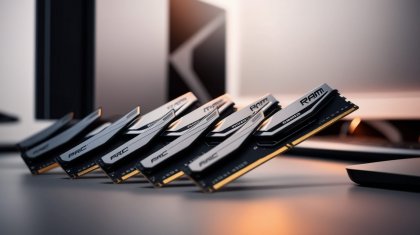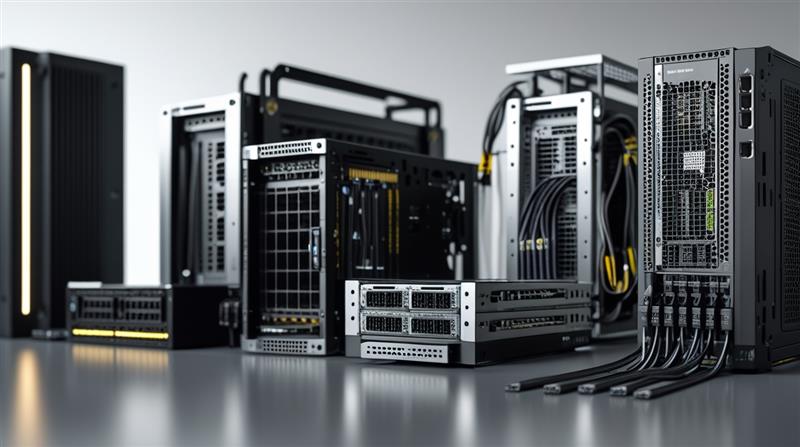Do you want to declutter your workspace, upgrade your server configuration, or mount your TV or monitor safely? If so, then learning about mounting kits is essential. Whether you're a tech enthusiast, an IT specialist, or someone who wants things organized, understanding what mounting kits are, their types, and how to buy them can make a significant difference. Let's explore the realm of mounting kits, what they are, why they're essential, and how to pick the best one for your needs.
What Are Mounting Kits and Why Do You Need Them?
Mounting kits are bundles of hardware designed to attach devices or equipment to walls securely, racks, or other surfaces. They comprise brackets, screws, bolts, and sometimes specialized accessories to keep your equipment firmly in position.
Why do mounting kits matter? Because they offer a secure, stable, and tidy method of installing equipment like:
- Monitors and TVs
- Computer hardware
- Network hardware
- Servers
- Security cameras
Using Top-quality mounting kits for IT equipment ensures a professional, neat, and secure installation. When to buy mounting kits online or shop at an online store specializing in mounting kits, choosing quality equipment is crucial, particularly if you're seeking durability and comfort.
How to Select the Best Mounting Kits for Your Requirements
Selecting the appropriate mounting kits for sale requires understanding your specific needs. The following are some of the essentials to look at:
Equipment type: Various types of equipment require specific mounting hardware. For instance, monitor mounting kits are designed for mounting screens, while rack mounting kits are specifically for servers and network equipment.
Weight capacity: Server and PC heavy-duty mounting kits must be able to carry heavy weights. Select heavy-duty mounting kits for online shopping that are rated for your hardware.
Compatibility: Monitors and other equipment usually employ VESA mounting kits, which are standardized and compatible with most screens.
Installation environment: Thin wall mounting kits or thick wall inserts are available for purchase, depending on the type of wall construction.
Types of Mounting Kits and Their Uses
Let's examine some of the most popular mounting kits and identify their most suitable applications.
1. Wall Mounting Kits
Best for TVs, monitors, and small electronic devices. They are available in many styles, including:
Slim Fit Wall Mounts: Structured for a thin, streamlined profile, ideal for contemporary spaces. These are ideal for monitor mounting kits to install near the wall.
Thin Wall Mounting Kits: Employed on walls with thin or fragile surfaces. They are convenient to install and suitable for light devices.
Heavy-Duty Wall Mounting Kits: For heavy devices or equipment that require additional support. These are essential when buying mounting kits online for servers or network racks.
2.Rack Mounting Kits
Designed specially for servers, network hardware, and data centers. These rack mounting kits are designed to neatly organize multiple devices securely in a rack.
3. VESA Mounting Kits
VESA (Video Electronics Standards Association) mounting kits are a standard across the board for TV and monitor mounts. They provide monitor mounting kits with ease of installation and cross-brand compatibility.
4. Suspension Mounting Kits
For use with specialized applications such as suspending projectors or some types of surveillance equipment. They sometimes include suspension mounting kits to suspend hardware from the ceiling or beam.
Why Use High Quality Mounting Kits?
Investing in high-quality mounting kits protects your equipment from staying loose and being damaged. Quality mounting kits are:
Long-lasting: Constructed with heavy-duty materials that can endure years.
Stable: Offer stability for even heavy or delicate equipment.
Warranty supported: Most OEM mounting kits come with a warranty, providing added assurance.
Ease of installation: Designed for simple, time and frustration-free installation.
When purchasing server mounting kits for sale or network hardware mounting brackets and kits, always opt for the best mounting solutions for IT hardware.
How to Install a Wall Mount Without a Stud
Many are asking how to hang items on a thin wall or one with no stud. The solution is to use a proper type of thin-wall mounting kit with suitable anchors. Follow these tips:
- Utilize toggle bolts or molly bolts to provide extra support.
- Select thin wall mounting kits ideal for drywall or thin surfaces.
- Always inspect the weight capacity of your anchors and hardware.
- Always refer to the manufacturer's guide carefully to ensure your safety.
What Is a Suspension Mounting Kit?
A suspension mounting kit is a hardware kit that enables equipment to be suspended or hung from ceilings or beams. They are usually employed for projectors, cameras, or specialized servers in industrial environments.
What Are the Three Types of Wall Mounting?
The three common varieties are:
- Fixed wall mounts: Known to hold the device against the wall.
- Tilting mounts: Permit vertical angle adjustments.
Full-motion mounts allow for swiveling, tilting, and extension from the wall.
What Is a VESA Mounting Kit?
A VESA mounting kit is a standardized system of brackets designed to support monitors and TVs. It can support numerous brands and models, making it a versatile option for monitor mounting kits.
How to Hang Things on a Thin Wall?
Use thin wall mounting kits with suitable anchors for lightweight devices. Always check the type of material used in the wall and choose hardware that can support the weight of your item.
Where to Buy Mounting Kits Online?
Searching for mounting kits for sale? You can check a mounting kit online store for a variety of options, including affordable mounting kits for servers and PCs. Do you need rack-mounting kits or wall-mounting kits? Buy online. Ensure that you select trusted sellers who provide OEM mounting kits with a warranty and high-quality mounting kits. Final Thoughts
Choosing the best mounting kits for IT hardware and other equipment requires understanding your specific needs, the environment in which the equipment will be installed, and the type of equipment itself. Whether you’re shopping for heavy-duty mounting kits for online shopping or monitor mounting kits, always prioritize quality, compatibility, and ease of installation.
Investing in proper mounting brackets and mounting kits for your network gear can save you frustration, money, and time. Remember that adequate hardware not only appears professional looking but also ensures the safety and extends the life of your equipment.
Want to level up your setup? Take a look at a mounting kit online shop today and get the ideal mounting kits for sale that suit your requirements!
Frequently Asked Questions
Q: What are various types of mounting?
A: Typical ones are wall mounting, rack mounting, suspension mounting, and VESA mounting, each for various pieces of equipment and settings.
Q: What does a suspension mounting kit do?
A: It's equipment hardware to suspend things from ceilings or beams and is best used for projectors, surveillance cameras, or industrial servers.
Q: What are the three wall mounts?
A: Fixed, tilting, and whole motion mounts.
Q: What is a thin wall mounting kit?
A: A kit for slim or fragile walls, with specialized anchors for the purpose.
Q: What is a VESA mounting kit?
A: A universal bracket system for monitor and TV mounting.
Q: How to install a wall mount without a stud?
A: Utilize proper anchors such as toggle bolts for use in drywall or thin surfaces.
Q: What is a slim fit wall mount?
A: A stylish, low-profile mount that positions devices near the wall.
Q: What is the difference between thin wall and thick wall inserts?
A: Thin wall inserts are for lighter loads, whereas thick wall inserts can handle heavier loads.








